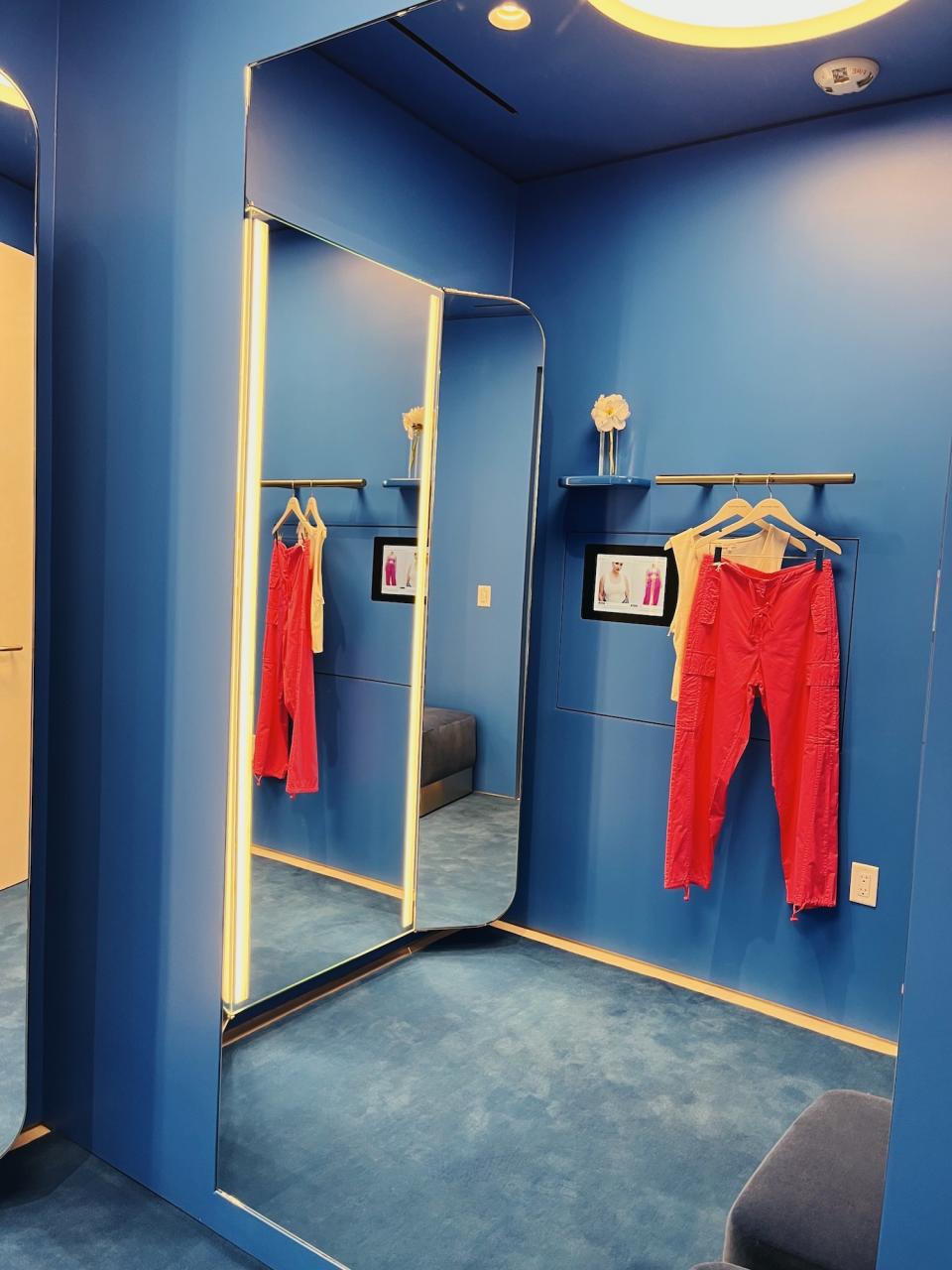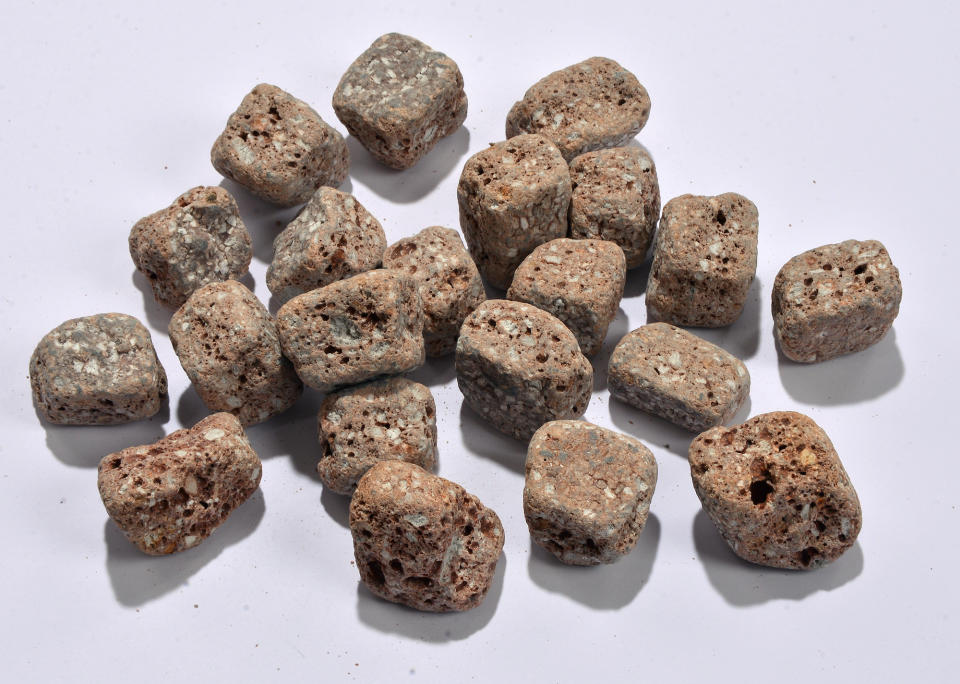Eye on 5: Companies to Have on Your Radar

There are many questions surrounding denim, from how to manufacture it more sustainably to how to sell it more efficiently. These five companies offer up some answers.
Crave Retail
How can technology better serve shoppers in the fitting room?
More from Sourcing Journal
Retail fitting rooms are finally getting the tech upgrade they deserve. Sure, shoppers can enlist the help of salespeople for a size swap or recommendation, but that’s often easier said than done.
According to fitting room technology company Crave Retail, a lack of prompt assistance in fitting rooms causes 85 percent of shoppers to abandon intended purchases. In addition, trying on clothing in our body-conscious society can be inherently fraught with emotion. “Customers are often sensitive asking a salesperson to fetch a larger size, and some would just rather not deal with a salesperson at all,” said Matthew Cyr, founder and CEO of Crave Retail.
Retailers like Good American, Under Armour and Victoria’s Secret (which outfitted 24 of its Store of the Future concepts with Crave’s fitting technology “to help product inventory in real time”), are helping consumers take matters into their own hands. In these cases, Crave’s RFID-tech automatically scans all items brought into the fitting room, uploads them to a touch screen, and lets the consumer order new sizes, colors, similar items, etc., as needed. Digital requests instantly ping a salesperson to bring over replacements or add-ons. In 2024, Crave will enable on-the-spot checkout.

Besides providing a seamless tech-enabled customer experience, retailers can now mine in-store conversion data—seeing not just what was purchased, but what was left behind in the fitting room. “From a sourcing perspective, brands can even see if items from a particular manufacturer were having conversion issues,” said Cyr. “That is data you weren’t able to get in stores before.”
Hand Made Stone (HMS)
Can distressing denim be done with an eco-friendlier pumice stone alternative?
Consumers might love pumice’s stone-washed effects, but nature certainly doesn’t love the pumice stone sludge left in its wake. Turkish-based company Hand Made Stone (HMS), sought a pumice replacement that not only disintegrates much slower, but requires less water and energy to use, and most importantly, produces effects “as good as pumice stone.”
Driving the charge is Beyza Baykan, who after graduating the University of South California with a degree in mathematics and international relations, has turned her talents to denim and her family’s business.

HMS lasts 50 times more than the conventional stone, works in cold water, requires at least 20 percent less water per load (fit for drystone), and can be customized with variable size, shape and density. Additionally, since HMS doesn’t leave dust on garments, brands can avoid additional rinse cycles (saving approximately 600 liters of water). The stones take up 50 times less storage space thus reducing shipping carbon footprint and have an EIM score of 0.
HMS also created HMS Light, a lower-density version of HMS Original, which can be used sensitive/recycled or thinner fabrics, said Baykan. She added that the two products are part of the company’s production line so it is always available in stock.
Nature Coatings’ BioBlack TX
Can denim find a better black?
“Black is the new black” may be a fashion cliché, but “BioBlack is the new black” could add a new perspective. Biochemical company Nature Coatings has found a better black, upping the sustainability ante with a 100 percent bio-based black pigment meant to replace the industry standard—petroleum-derived carbon black.
Named BioBlack TX, this non-toxic, carbon-negative black pigment is achieved by harnessing pre-consumer industrial wood waste. All is FSC-certified, so whether from lumber, flooring, paper or furniture, the wood waste can be traced back to sustainably managed forests.
The highly versatile BioBlack TX has no detected PAH or carcinogens, and it can be used for safer screen and rotary printing, denim, leather/non-leather coatings, packaging, pigment dyeing and more. BioBlack TX is also produced via a closed-loop, circular manufacturing system, with parts of the U.S.-based facility powered by captured steam byproduct.
BioBlack TX’s promise even caught the attention of actor and climate activist Leonardo DiCaprio, who was part of a $2.45 million seed funding round, led by Regeneration.VC, The 22 Fund, Safer Made and Portfolia.
A 20-year veteran in pigments and dyes, Jane Palmer, Nature Coating’s CEO and founder, is passionate about making BioBlack TX’s adoption accessible for the industry. “BioBlack TX doesn’t require any special CapEx at the mill, and we tried to get as much price parity as possible, plus it has the same performance—if not a little bit better—because it has better light fastness than carbon black.”
Created for both denim and other apparel textiles, Nature Coatings has been printing BioBlack TX over Levi’s WellThread’s plant-based indigo capsule, and has teamed with Turkish denim mill Orta on a current collection.
Soko Chimica
Can denim’s drying step be made smarter?
Why should laundries dry denim after the finishing process when they can do both simultaneously? Soko Chimica has already gained acclaim for its patented and more sustainable Lumia fading process, which replaces pumice, potassium permanganate and hypochlorite. Now, the Florence, Italy-based chemical company and research lab is letting companies apply Lumia during their drying process to save both energy and time.
Called Soko Diamond, the newly launched technology consists of Lumia-infused rags, which are then tossed in the dryer, so laundries can create sustainable and chemical-free fading techniques during drying.
“Lumia is the first eco-certified non-oxidizing product that allows you to obtain fading effects on denim (blue or black) and on dyed garments with ozone in dry conditions,” said Luca Braschi, Soko’s consultant and denim finishing expert. “Diamond optimizes this application.”
Regarding results, Lumia applied by nebulization may be slightly more bleached, while Diamond application makes more hi-low contrasts and stone wash/acid wash look, he said, but regardless, there is no interference with fabric resistance. “Diamond is not a physical abrasion, and no chemical reactions occur during the drying,” he said. “It is just a smarter way to apply Lumia.”
Placer.ai
How can brands and retailers better leverage location data?
Too many brands and retailers focus on product, product, product, when they really should be concentrating on location, location, location.
Making reliable location analytics accessible, and doing so at scale, can fundamentally improve the way businesses operate and bring a new visibility to shopper behavior and needs. Such data analysis and adoption are particularly important today, as malls have been evolving.
“Physical retail is still the dominant channel for consumers to engage with products, and leveraging data to better understand locations, markets and audiences can help maximize the performance of those locations,” said Ethan Chernofsky, SVP marketing, of location intelligence and foot traffic software Placer.ai.
Shopping behavior is evolving, too. Consumers aren’t popping into the mall to pick up a single item; that type of shopping activity is best done online. Malls are now more about having a “day out” experience, said Chernofsky, so they need to deliberately curate that experience to drive and sustain longer and more substantial consumer visits.
Placer enables retailers to better understand and identify their audiences to optimize how they operate throughout the lifecycle of a location. From choosing the ideal space in their site selection process, better aligning marketing and messaging to reach to a local or regional audience, measuring the impact of performance, contextualizing the success and even optimizing merchandising per location, “there are few activities that cannot be enhanced with this level of understanding,” he added.
“At its core, retail is about understanding your offering and your customer and looking to connect the two.”
This story appears in Rivet’s winter issue. Click here to download the digital magazine.

